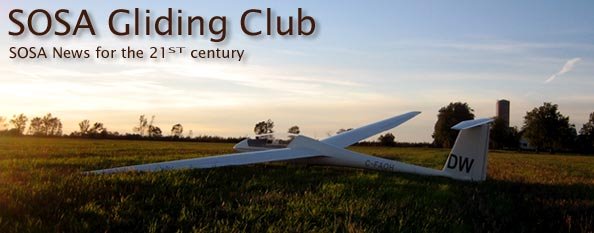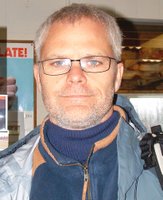Friday, May 26, 2006
Mid-week Towpilot and Other Miscellaneous Notes
Gary is currently attending Conestoga College in the Aviation program and has completed his commercial pilot licence. He is also a glider pilot and has instructed in the Cadet program during their summer training programs. Gary lives in Cambridge, about a 10 minute drive from the airport.
Other Notes
LS4 - is stored in the south end of the small hangar as will the DG 505. Ensure that the white wing covers and canopy cover is installed on the LS4 before you put it away. You should also wash the bugs from the wings before putting it away for the night. Use the Nu Finish Wax (orange bottle) avoid using water since it leaves large mineral deposits on the wings when it evaporates.
Small Hangar protocol - If you take the LS4 or DG out of the small hangar, return all other aircraft that you moved to the same spot from which you moved them. Once all aircraft are back inside the hangar, close the hangar doors. Do not leave the hangar doors open and aircraft outside.
Jantar - is stored in the large hangar with purple wing covers and canopy cover. As with the LS4 wash the bugs off before you put it away.
All gliders - if you are the last person to fly a glider, it is your responsibility to put it in the hangar. Do not leave it siting on the grass in front of the hangar for someone else to put away. Avoid using water to wash the bugs, use wax or pre-wax cleaner instead (see LS4 notes).
Parachutes - each parachute has a bag, they get lonely when separated. When you take a parachute in the glider, take the bag and stow it in the baggage compartment. When you land put the parachute in the bag and return it to the bus. Do not leave the parachute in the glider, especially do not leave it uncovered (ie out of the bag). The UV will destroy the parachutes in no time. How would you like top be left in a cockpit (on the ground) for two hours with the sun shining on you? Do not leave parachutes in the cockpit of the glider overnight in the hangar, return them to the bus. The club has over $20,000 invested in parachutes, help us preserve this investment.
Ballast Weights and Ballast seats - if you fly with ballast weight remove it after your flight. An unsafe condition may occur if a heavy person gets in the plane after you and does not notice your ballast weight. Return your weights to the bus after your flight, and again do not leave them in the glider overnight in the hangar.
When flying mid-week, there are several items that need to be attended to before and after flying since there is no duty crew.
Hangar unstacking - if you remove gliders and towplanes from the hangar to get to another glider at the back of the hangar, return all the gliders and towplanes you removed to the hangar before you fly. Do not leave them sitting outside for the day. This protects the planes from uneccessary UV damage, as well as the potential for wind damage. It also prevents visitors from accidentally damaging the gliders when everyone is up flying and the gliders are left unattended for hours.
Flight cards and Flight sheets - it is the responsibility of the pilot to fill in both the flight card and the flight sheet. Ensure that you transcribe the flight number from the flight sheet onto your flight card, this must be completed before take off. Keep track of your take-off and landing time and complete the duration portion of the card and sheet when you land. The sheet is used by Adam Zeiba and Patricia Olivier-Martin to fill in the journey logbooks, any incomplete information adds extra work for them.
Mid-week and weekends at the end of the day - collect all the white portions of the flight cards, place them in an envelope, label it "Flight Cards" and add the date. Place the envelope in the cash box in the clubhouse.
Flight sheets - all full flight sheets should be placed in the mail slot labelled flight sheets (currently in the hangar). Incomplete sheets should be left on the white flight board.
Thursday, May 25, 2006
Junior Team Grass Cutting Service
Jay Allardyce
Canadian Junior Soaring Team at SOSA
Jay Allardyce (Captain)
Sean Cappleman
Sean Coulton
Josh Esser
Chris Gough
Keith Hartley
Kyle Nordman
Adam Oke
Mike Tryggvason
The mentors for the junior team are Jerzy Szemplinski and Dave Springford.
The mandate of the SOSA Junior Team is to support advancement in soaring past the licensing stage and to foster the development of cross-country flying in youth. The team is planning to compete in a few competitions this year; namely SOSA’s Mudbowl, the Ontario Provincials, and plans to help out with logistics at the Nationals.
The team is currently seeking sponsors for the 2006 season. Funds raised will be used to support the team’s endeavours and development through subsidized tows and competition registration fees in 2006. The team would also like to work towards having an entry in the 2009 World Junior Soaring Championships (A first for Canada). To accomplish all that the team can this year and in subsequent years, we need your help. If you have a business or know of a business that is willing to support such a venture, please contact Jay at Jay@juniorpilots.ca. All donations are tax deductible and will go towards supporting enthusiastic youth in the community.
If you have questions about the SOSA Junior Team and its goals, please do not hesitate to speak with any of the aforementioned members.
Jay Allardyce
Team Captain
Sunday, May 21, 2006
Les Wallers artistry
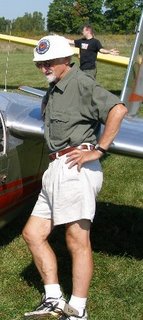
Special thanks to Les Waller for applying his creative works of art for the clubhouse. See the illustrations below.
Les has been a professional illustrator since he was 18 but he laments the passing of this creative art form which has now been virtually replaced by computer imagery. However Les still keeps going and is currently undertaking an illustration of a major downtown Toronto building
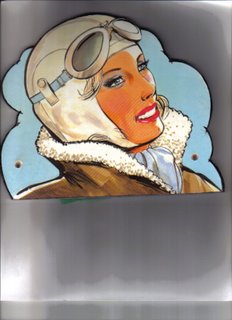
Les sees the artistry of gliding as his recreation and flys his Libelle - NBE 22 (no bloody engine) as much as possible. Les has been gliding since 1980 when he joined the Erin Club and has been a member at SOSA since 1986. He has a trailer at the field and is often at the club overnight.

Les is rather coy about his artistic achievements but in a conversation I did manage to tease out the fact that he had on several occasions been selected to display his work at the Royal Academy in London's Piccadilly. This during the late 1940s and early 1950s. Les came to Canada in the 1960's and has worked his art with several merchandisers as well as building design firms. He was hoping to further his interest in portraits and has undertaken several well known figures including Donald Bell a former principal of McGill University. You may also find his townscapes and streetscapes of Montreal in various attics just waiting to become famous.

Les comes from London UK - a suburb called Tottenham (home of the Spurs for you soccer fans) - where as a small boy he vividly recalls seeing VI bombs cruising overhead. Les did his national service in the army but was upset at not being sent to some exotic overseas destination and instead was sent to Blackpool - somewhat akin to Niagara Falls some years ago. When you see Les at the field dont forget to remind him of this but be warned - he has a very dry sense of humour - typical Brit.
Tuesday, May 16, 2006
Work at the weekend
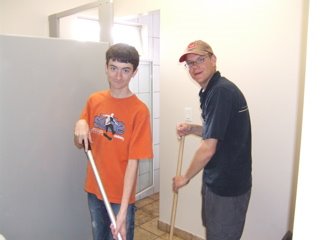 Unfortunately the weekend was pretty wet and non-flyable. However a number of members responded to Dave Springford's call for all hands on deck. These are some pics from Saturday (credits to Terry and Jean-Marc) and I am told that Sunday was another fun and work day.
Unfortunately the weekend was pretty wet and non-flyable. However a number of members responded to Dave Springford's call for all hands on deck. These are some pics from Saturday (credits to Terry and Jean-Marc) and I am told that Sunday was another fun and work day.On Saturday, a party of 7 or 8 managed to do many of the remaining never ending details in the clubhouse whilst Lorna Novosel and John Brennan along with help from Terry Macartney-Filgate waxed BWY, the yellow towplane. Dennis Dyke and Jay Allardyce did a good job cleaning the tile grout on the walls and floors in the new washrooms,
 Dave Ferguson and Dennis' Father (Malcolm) re-stained the back wall after 40 years.
Dave Ferguson and Dennis' Father (Malcolm) re-stained the back wall after 40 years.Doug Bremner did the most amazing job of carpentry in the back room to complete the window trim and Dennis and Jay applied three coats of clear varathane.
 Meanwhile Jean-Marc was busy doing all sorts of jobs to finish the wall around the electrical panel and clean up little details. What a perfectionist !! Sergei and Roy were busy repairing the electrical panels.
Meanwhile Jean-Marc was busy doing all sorts of jobs to finish the wall around the electrical panel and clean up little details. What a perfectionist !! Sergei and Roy were busy repairing the electrical panels.  The master painter at work Peter Meszaros was seen finishing all manner of work in the washrooms and was planning to come back during the week to complete the painting - thanks Peter. Anthony Kawzowicz was keen to hang all sorts of things on the walls, Phil Hinton helped out with disposal of oil and the Facilities Director Herrie Ten Cate ferried all manner of material from Home Depot to SOSA. The Burany's are not to be forgotten of course and Steve was busy hanging a cabinet in the kitchen whilst Olga cleaned up after him and organized the kitchen. Dave Springford, well what can we say, as usual he was involved with everything and Virginia Thompson arranged the seating so that it doesnt look like a waiting room.
The master painter at work Peter Meszaros was seen finishing all manner of work in the washrooms and was planning to come back during the week to complete the painting - thanks Peter. Anthony Kawzowicz was keen to hang all sorts of things on the walls, Phil Hinton helped out with disposal of oil and the Facilities Director Herrie Ten Cate ferried all manner of material from Home Depot to SOSA. The Burany's are not to be forgotten of course and Steve was busy hanging a cabinet in the kitchen whilst Olga cleaned up after him and organized the kitchen. Dave Springford, well what can we say, as usual he was involved with everything and Virginia Thompson arranged the seating so that it doesnt look like a waiting room.On Sunday, another group including Bob and Sean Coulton, Tom Coulson, George Haeh, Scott Hube, Steve Robinson, Chris and Neil Wilson, and Jay Allardyce continued work in the clubhouse while Keith Hartley, Spencer Hunt and Jerzy Szemplinski washed and waxed the LS4 and Junior trailers.
What a nice place we have. Thanks to all the helpers!



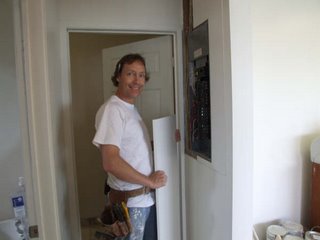



Cross Country Competition – handicap ranking

Terry McElligott comments on the blog editors new Discus and gives an interesting handicap ranking table for the SOSA fleet
Looking a these figures I can deduce that DG (Terry flies a DG200) build fabulous airplanes ... maybe you ought to trade up! ;-)
I was sent a handicap list a while back for various gliders. The BGA is really into this stuff because, I presume, they've got a pretty good contest scene. The higher the handicap the hotter the glider...
Here's a page:
http://www.aircross.co.uk/bgaladder/Handicap.asp
Here are some figures for ships at the SOSA:
DG 800 (Willem's ship and Wilfried's glider) 110 in 18 metre, 103 in the 15 metre span)
LS 8: 106 at 18 metres and 100 at 15 metres. Andy Gough, Joerg Stieber and Dave Springford fly these.
Kestrel 19 is 102 (Steve Burany)
AS W20 B and C, an even 100 (Lima Victor and Tango Whiskey might be these '20 types)
LS 6: 101 (we have two at the field... John/Martin's and Steve Newfield)
Mosquito, 98 (Tom Coulson and Chris Wilson's ship)
Discus is handicapped at 98;
DG-500 Orion at 20 metre span, 98 (unfortunately not our new DG-505)
SZD 55: 98. (Doug Bremner, Jerzy, Adam)
DG-200 in the 15 metre span is 97. (In the interests of full disclosure: I have a soft spot for this type!)
LS 4 at 96.
PiK 20, 96. There are a couple of different types around but the list does not differentiate.
Hornet H205, 90
Standard H201 Libelle is 89 (Les Waller/Phil Morton's and Dan Bush's gliders) There is a flapped version, the H301, h'capped at 96).
The SZD-51-1 Junior is 86.
Blanik is 65 - presumably this applies to the L-13 and L-23.
More observations. The 15 metre class sailplanes, which are older, are rated slightly higher than similar standard gliders for most configurations. The added flaps make a difference in higher speed handling and thermalling, but they add a level of complexity. Newfield has observed while flying Andy Gough's LS 8, in 15 metre configuration along with me in my 15 metre DG, that there wasn't too much difference and the numbers bear that out. They are 100 for the 1988 LS 8 and 97 for the 1978 DG. The real boost in performance comes with longer span. The DG 200 was redesigned with wingtip extensions to bring it up to 17 metres which handicaps it at 101, same as the LS 6. My old glider is before that time. the LS 8 in 18 metre configuration boost it to 106.
Terry
New SOSA member, Ping Wu

Ping is a private pilot with approximately 470 hrs total time. He has flown quite a few different types of aircraft including Cessna 177RG, 172, 150, Piper Cherokee, Warrior, Seminole, Aztec, Navajo, Beech Bonanza, Bombardier Challenger 604, Dimona h36 and more recently the SOSA Blanik L-23 (2 flights with SOSA instructor Pat O'Donnell).
Ping has always been interested in aviation but he has never thought about gliding because he likes to travel and visit different places. However in 2002, he was in Denmark visiting one of his best buddies, a glider pilot. He arranged a flight in a Dimona h36 motorglider with an impressive 16 meter wingspan.
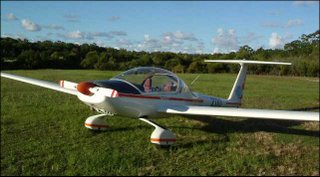 Ping and his friend flew it from an airport near Billund (Billund is in the middle of the Jutland) to the west coast of Denmark. Ping was struck by the motorglider's capability and intrigued to learn more.
Ping and his friend flew it from an airport near Billund (Billund is in the middle of the Jutland) to the west coast of Denmark. Ping was struck by the motorglider's capability and intrigued to learn more.
Fast forward to 2006 and Ping has just joined SOSA, working towards his glider pilot's licence. His ambition is to buy a motorglider and keep Wilfred Krueger company.
Ping graduated from the University of Guelph in 1988, and in order to pay for his flying he moved to Toronto to work as a process engineer for a food processing equipment manufacturer. The company then sent him to the US and Europe and then back to Toronto. Ping is now with the Ontario Ministry of Agriculture, Food & Rural Affairs in Guelph as the Food Safety Advisor, Engineering. He develops policy and standards for food safety and nutrient management legislations.
Welcome to SOSA, Ping
Sunday, May 14, 2006
Gliding at CU Nim - article in the Calgary Sun
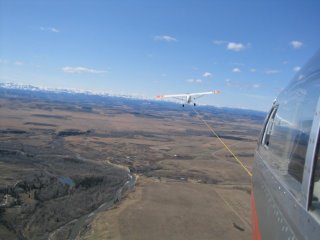
A nice article in the Calgary Sun gives good exposure to the sport. See the link below
http://calsun.canoe.ca/News/Columnists/Kaufmann_Bill/2006/05/14/1578789.html
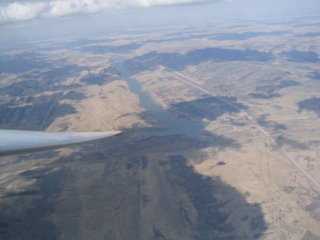
Saturday, May 13, 2006
SOSA Towing procedures
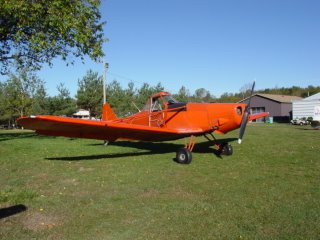
Pete Vados has created a great visual presentation on towing procedures.
It will be of great interest not only to tow pilots but also to us glider pilots since it is good to know what issues the tow pilot is having to resolve while we are hanging on behind.
Thanks Pete for putting this together. The presentation is in powerpoint and the file is downloadable from the SOSA web site under membership and documents (miscellaneous)
Friday, May 12, 2006
Friendly cameraderie at SOSA

We love visitors especially glider pilots and enjoy hearing about the news and events at other clubs. Last Sunday UK resident and glider pilot Melissa Jenkins visited SOSA whilst on a business trip. The photo shows John Brennan (getting very friendly) as well as Patricia Olivier-Martin and our CFI Lorna Novosel.
Melissa is a member of London Gliding club at Dunstable Downs north of London and has been a pilot for 4 years flying her own LS4.
Melissa remarked that she visits many clubs on her travels around the globe and that SOSA is distinctive in it’s friendliness. She was impressed at the way she was greeted and directed to the flight line. Melissa found us easily from the web site.

Melissa has travelled to some far away places for her job and has also found gliding clubs in such places as New Zealand (where she was born), Australia, Ireland, US – Minden and Canada – Invermere, and nonetheless finds that SOSA is the most welcoming for visitors. Melissa is a marketing consultant for high tech firms and although born in NZ, she studied here in Canada at Mount Albert in New Brunswick. Quite a travelled lady!
I just checked out the London Gliding Club web site and their newsletter http://www.gliding.powernet.co.uk/newsletter/latest.pdf
tells readers that Melissa is their new inter club cross country captain.
If you visit London you should check out the London Gliding Club and Melissa. Sign up for the cross country competition.
Thursday, May 11, 2006
Jerzy's 1,000km record at The Ridge
The Ridge is a series of ridges and valleys in Pennsylvania about a 5.5 hour ride from Toronto at a place called Mifflin County Airport, just outside Lewiston. Jerzy and 3 friends make an annual pilgrimage to Mifflin and what binds them is that they all fly top performance SZD gliders (and they secretly all speak Polish!).
The party of 4 arrived at Mifflin last Thursday May 4th. Jerzy, Richard Krolikowski from New York and another pair from the Chicago area. Saturday was the big day after a couple of days of measly 255km and 466km flights. Saturday didn’t look promising but Jerzy took a tow at 11:00am and by 11:30 the wind had picked up from the north west. Things didn’t look altogether promising and two of the SZD crowd chickened out. Jerzy and Richard however took off on a south west track for their 1,000 kilometer journey.

You can see the flight entrered on the “On Line Contest” http://www.onlinecontest.org/ Amazingly anyone can download Jerzy’s flight and if you have "See you" software the flight can be played in 3D.
According to Jerzy the ridge works at about one wingspan above the treetops and about 300 meters above the valley floor. The ridge however is not continuous and he had to look for thermal lift in between the ridge lines. Roughly 80% of the flight was completed using ridge lift and the remainder using rough thermal lift. Sounds pretty adventurous!! Jerzy says that he had couple of challenging moments but whole flight was done in very safe fashion with air speed 80 to 90 kts 100-300 feet from the ridges.
The flight lasted for almost 9 hours with Jerzy and Richard landing out not far from Mifflin at 3 minutes before sunset and covering 1012 kilometers, a huge distance and at a recorded average of 114 kms per hour. The distance was good for a claim of the Canadian record in a club class glider using free 3 turn points.
Well done Jerzy
All hands on deck this weekend
 - Please give us a hand with some work this weekend. Both Saturday and Sunday we have some essential work to do at the field. The successful flying start to the season has meant that certain work has been left undone. Examples of jobs are
- Please give us a hand with some work this weekend. Both Saturday and Sunday we have some essential work to do at the field. The successful flying start to the season has meant that certain work has been left undone. Examples of jobs areLets get together and do this while the weather is not so good
Dave

Wednesday, May 10, 2006
Polish lesson 1 / Housekeeping 2 - mieci
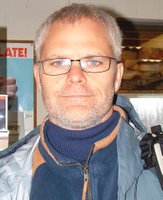 garbage.
garbage.The City of Hamilton
 picks up household smieci on Monday morning and we pay as as part of our taxes. The bin costs the club an extra $90 per load .....so please carefully reserve your use of the bin. Place the smieci by the side of the road and separate the recyclable smieci in the blue bin.
picks up household smieci on Monday morning and we pay as as part of our taxes. The bin costs the club an extra $90 per load .....so please carefully reserve your use of the bin. Place the smieci by the side of the road and separate the recyclable smieci in the blue bin.Do widzenia - Bye
Housekeeping 1 - Air conditioning for trailers

Herrie our grounds director has reminded us that we are not able to support air conditioning for members trailers.
1 Our hydro feed is 15 amps and is not able to support the load without a fire hazard.
2. We dont have separate meters to re-charge the high cost.
Too Hot? You can always join Emil Kaminsky in Nepal - see yesterday's blog
Tuesday, May 09, 2006
Emil Kaminski achieves Diamond Badge ???

 One of our members Emil sent in this article for our blog and claims a diamond height badge :-) on his return from Nepal.
One of our members Emil sent in this article for our blog and claims a diamond height badge :-) on his return from Nepal.I wanted the Diamond Climb for god-knows-how-long, but being a low-performance pilot I thought it safer to do onfoot... I tried the Annapurna Circuit in September 2005, but about3 days before the summit at Thorung La (5416 m asl) Imashed my knee fair bit, and needed to fly out. So muchfor safety and avoiding flight... Being stubborn, and finding myself with loads of time andno job (my usual "self-unemployed" condition), I flew backto Nepal in March of this year to give it another whirl. This time it all went smooth. Ok, for most of the time. After 2 weeks of hiking with an oversize pack full of nuts,chocolate, and thermal underwear, I got to the Thorung Labase (photo shows me relaxing on some plastic furniturethat some other lucky soul got to drag up there).
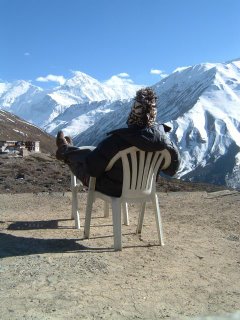 In keeping with the tradition of surprises, there was anunreal snow dump THE NIGHT BEFORE my summit. By the time Iwent up, it was about -20 degrees, although nice and sunny. The 3 feet of snow didn't help much though. There was agroup of people going up that day, and in the photo youwill see that some pack more than others (that is a porterthough, so SOMEONE ELSE made him carry the sink and the boxof apples). Everyone made it up and down safely, although most got somesort of altitude sickness: headaches, nausea... ** When I got off the trail after 3 weeks in the sticks, itturned out that the "smoothness" had ended and the wholecountry was falling right apart, with demonstrations andshotings and tear gas and all that stuff.
In keeping with the tradition of surprises, there was anunreal snow dump THE NIGHT BEFORE my summit. By the time Iwent up, it was about -20 degrees, although nice and sunny. The 3 feet of snow didn't help much though. There was agroup of people going up that day, and in the photo youwill see that some pack more than others (that is a porterthough, so SOMEONE ELSE made him carry the sink and the boxof apples). Everyone made it up and down safely, although most got somesort of altitude sickness: headaches, nausea... ** When I got off the trail after 3 weeks in the sticks, itturned out that the "smoothness" had ended and the wholecountry was falling right apart, with demonstrations andshotings and tear gas and all that stuff. 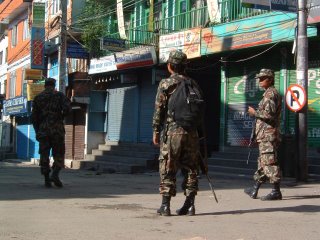 The people gottired of the king, and staged a nation-wide strike. It gotvery messy. My ticket out of Nepal was far June 27th, so I thought Iwould go to the Biman Bangladesh Airline office and get itchanged, but since there was a tank parked outside (seephoto) and a shoot-to-kill curfew, I changed my mind andflew with Thai Air instead. But hey, Diamond Badge, eh!? Where do I send the forms?
The people gottired of the king, and staged a nation-wide strike. It gotvery messy. My ticket out of Nepal was far June 27th, so I thought Iwould go to the Biman Bangladesh Airline office and get itchanged, but since there was a tank parked outside (seephoto) and a shoot-to-kill curfew, I changed my mind andflew with Thai Air instead. But hey, Diamond Badge, eh!? Where do I send the forms? 

Monday, May 08, 2006
Wohoo - The new DG 505 Orion is soon to fly at SOSA

Dave Springford reports that Willem Langellan received a call this morning from an official at Transport Canada , and at last they have all the paperwork needed to issue the type certificate. The problem occurred when the manual was found to contain solely imperial measurements and not metric. The conversion and manual amendments had to be done in Germany and thus the hold up. The draft certificate is now sitting on a bureaucrats desk in Ottawa, so all that needs to be done is a signature and we are set to fly. Dave expects the official document will be available by mid-week.
wohoo!
The photos are of the new plane being test flown in Slovakia during January this year where it was made. Beautiful ! There is no reason not to fly in the Canadian winter if it can be done in Sloakia!! One photo below shows Dave S showing off the newly arrived plane in its trailer at the AGM in Feb.
The following text is from the manufacturer web site.
The most obvious characteristic of the 505 ORION is it's great variability in wingspan. On one hand it can be used in it's 17.2 m version for aerobatics or initial training, and on the other hand the wing extensions to 20 m makes full use of the wingspan limits set for the Two-Seater Class. The enhanced L/D (44) with the larger wing adds to the pleasures of cross country soaring. With the optional tip extensions to 18 m the ORION resembles the well-known trainer, but with many improvements in the details. In this configuration with fixed (non-flapped) wings this two-seater is best suited for training.

For additional desciptions see
http://www.dg-flugzeugbau.de/dg-505-multitalent-e.html
Dave


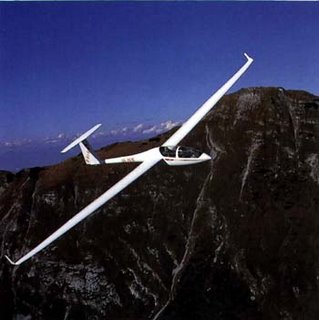
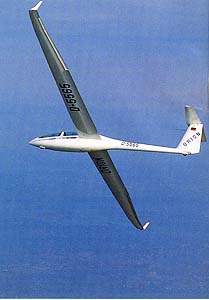
Thursday, May 04, 2006
A great article about gliding
Soaring in a glider, you hear only the wind and feel the whoosh of thermal current carrying you upward.
BY RICHARD CHIN
Pioneer Press in Minnesota
Like a circle in a spiral, like a wheel within a wheel, never ending or beginning, on an ever-spinning reel …
We don't know about you, but mention sailplanes and we immediately think of the scene from the original "The Thomas Crown Affair," where Steve McQueen soars through the sky in his glider while the soundtrack warbles the Oscar-winning "Windmills of Your Mind."
There weren't any late-1960s pop hits playing when we took a glider ride in Faribault recently, but we can report that the experience was still Steve McQueen cool. In case you haven't seen "The Thomas Crown Affair," soaring is a sport in which you fly a sleek, motorless glider that's towed a few thousand feet up into the air by a powered airplane. Once aloft, your glider — also called a sailplane — disconnects from the tow rope, and if you're a good pilot and conditions are favorable, you can soar for hours and hundreds of miles, riding the updrafts like a giant, carbon-fiber eagle.
Local soaring clubs are based out of airports in Stanton, Minn., and Osceola, Wis. Cross Country Soaring, at the Faribault Airport, is a commercial soaring operation. Cross Country Soaring owner Don Ingraham is a veteran soaring pilot, competitor and instructor. The 52-year-old is a former supercomputer instructor with Cray Research who turned his avocation into his living two seasons ago, offering rides, rentals, instructions and tows. Before our flight, Ingraham familiarized me with the cockpit of the Grobe 103, one of two German high-performance two-seat trainers he owns.
The tow plane took up the slack in the 200-foot towrope, and we started to move down the runway. It felt sort of like being in an enclosed go-kart at first. The seats in a sailplane are in a semi-reclined position, and you roll low to the ground, since the landing wheel only just protrudes out of the plane's belly.
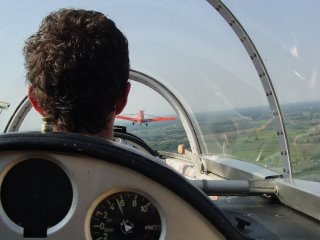 But in a few seconds, we were moving at 50 mph and up in the air, ascending behind the tow plane. A few minutes of climbing and we were a mile closer to the fluffy, cotton-white clouds hanging over Faribault. "It's a gorgeous day," Ingraham said. The air was cool and dry. The sun was hitting the ground. Good conditions to create the updrafts soaring pilots seek.
But in a few seconds, we were moving at 50 mph and up in the air, ascending behind the tow plane. A few minutes of climbing and we were a mile closer to the fluffy, cotton-white clouds hanging over Faribault. "It's a gorgeous day," Ingraham said. The air was cool and dry. The sun was hitting the ground. Good conditions to create the updrafts soaring pilots seek.Ingraham told me to tug on a yellow knob next to my knee. The yellow rope dropped away, and the tow plane banked to the left as we turned to the right.
As I watched the tow plane spiral below us back to the airport, I understood what they meant.
Without an engine, there's no constant roar and vibration. In a sailplane, you hear only the sound of the wind speeding over the canopy and fuselage and feel the whoosh of thermal current carrying you upward.

Even if it was only the lakes and flat, brown farm fields of Faribault beneath us, the view through the big Plexiglas canopy was terrific. We cruised in gentle circles above the airport, moving at about highway speeds and chatting in normal voices, as Ingraham searched for the currents that could keep us up all afternoon or carry us down to Iowa if we wanted.
Ingraham maneuvered under a thick cloud, and we started a circling climb to it.
A vario is a gauge that tells you your rate of ascent or descent. The audio vario operates like a Geiger counter. The pitch in tone gets higher as your rate of climb increases, and it drops in pitch as you descend. You can get the same information from a visual vario dial on the instrument panel, but the audio vario lets Ingraham keep his eyes on the sky while his ears look for a lift, steering toward the high-pitched tone.
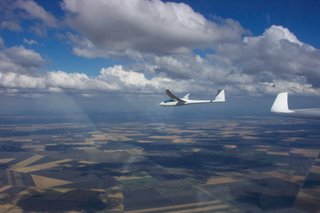
Sailplane pilots also keep an eye out for circling birds who are looking for a free ride skyward or are just lunching on bugs that are caught in a thermal updraft.
Ingraham pointed out some company. "We've got two hawks to fly with. We're going to join them. They're the experts," he said. I gaped at the two redtails soaring just above our canopy, seemingly undisturbed by our presence. Another clue on how to find a good thermal is to watch other sailplanes. We spotted a single-seat model and started circling each other. It was a beautiful sight.
Long and slender, sailplanes look like supermodel swans. They're usually always painted white, because the composite materials used to build them will weaken if they get too hot.
They aren't cheap. Lower-performing models can be had for about $8,000, Ingraham said. But you can pay tens of thousands for competition models. A new version of his trainer, with instruments and trailer, would cost about $120,000, Ingraham said.
"I find this a lot more thrilling," said Shannon Geer, a 35-year-old private pilot who is taking sailplane lessons from Ingraham. "No engines. Landing, you get one shot at it."
When Ingraham let me give it a try, I found that just the slightest pressure on the control stick changes the plane's direction. Ingraham said helicopter pilots often make good sailplane students because they have a subtle touch.

Ingraham can give passengers a smooth, gentle ride. But sailplanes are capable of roller-coaster swoops. Ingraham demonstrated a wingover, a banking climbing turn, with a brief feeling of weightlessness at the top and a gulp-inducing view of the ground below. Loops and spins are possible. too, but you need to be wearing parachutes, Ingraham said.
With the right pilot, plane and conditions, sailplanes are capable of climbing as fast at 3,000 feet per minute and reaching altitudes that require oxygen masks. On average, a couple of people are killed in sailplanes each year, Ingraham said. But he thinks soaring is probably safer than private power-plane flight. Eventually, Ingraham wound the plane down toward the airport, using the airbrakes on the wings to get us down to 45 mph and a gentle touchdown.
Without a motor, he has only one shot at a landing. But on cross-country trips, if he has to, he only needs a few hundred feet of farm field to land.
"There's a million places to land," he said, indicating the flat fields around us.
Most farmers like the novelty of a sailplane visitor, Ingraham said. And when he lands in a field, it's only about a 15-minute job to take off the wings and tail. Then all he has to do is wait for his wife to arrive with the trailer to pick him and the plane up for the drive home.
Wednesday, May 03, 2006
Unusual Attitude Training

Optional training for SOSA members in unusual flight attitudes
If you're in a rut with your flying straight and level or if you think you're hot sh*t give our course a try. Even if Tom Coulson has written "bad attitude" in your PTR we can help. You might discover something about your flying skills and even about yourself.

Andrea Kuciak wants to invite members to participate in SOSA's optional training in “Unusual Attitudes and Advanced Stall/Spin training.” As an average pilot, your blog correspondent took the course last year and found the training to be very helpful
Once you decide you want to give it a try you can take it as far as you want. Some pilots just want to get some unusual attitude experience and some want to go all the way and learn some aerobatics. It's up to you.
While a glider license is highly recommended before starting the program it is not an absolute requirement. If you are not licensed, your skill level will be evaluated on an individual basis by the CFI to determine your eligibility for the program.

The first lessons deal with controlling the aircraft smoothly and confidently to make it do what you want. This means speed control, g-control and directional control in various "attitudes" all within the flight envelope of the aircraft. Forget the yaw string!!!
There are six ground briefings that will be covered throughout the training covering:
· Airspace,
· Club Rules and Regulations,
· Flight Envelope,
· Human Factors,
· Aerodynamics and
· Emergency Egress.
The flight lessons progress as follows:
· the theory of stalls and spins,
· stall recognition at various wing loading and various speeds,
· recovery from stalls and spins,
· stalls/spins and recovery from a variety of situations (including but not limited to up-lines, down-lines, wing-overs, turns and loops),
· characteristics of spins (such as accelerated spins, flat spins using out-spin-aileron and tighter spins using in-spin-aileron).
The final lesson before progressing to aerobatics if you wish to do so will involve recovery from vertical up and vertical down lines.
If you're interested or just have questions you can call, email or talk to Scott or Andrea on the field anytime.

Blog Editor – Bad attitudes? A couple of years ago my daughter Suzanne found my PTR and noted with great amusement a critical comment from Tom Coulson about control of my bad attitude!!!!!. Andrea's attitude course soon put this right. I'd recommend the course for fun as well as proficiency.
